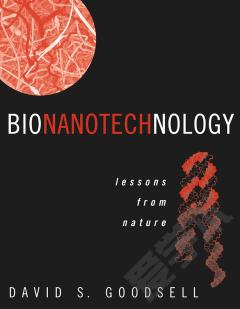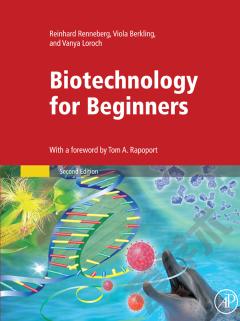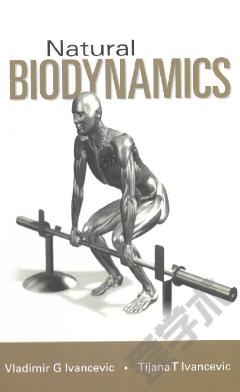Bionanotechnology —— Lessons from Nature
----- 生物纳米技术原理:学自自然
1. The Quest for Nanotechnology. Biotechnology and the Two-Week Revolution. From Biotechnology to Bionanotechnology. What is Bionanotechnology? 2. Bionanomachines in Action. The Unfamiliar World of Bionanomachines. Gravity and Inertia are Negligible at the Nanoscale. Nanomachines Show Atomic Granularity. Thermal Motion is a Significant Force at the Nanoscale. Bionanomachines Require a Water Environment. Modern Biomaterials. Most Natural Bionanomachines are Composed of Protein. Nucleic Acids Carry Information. Lipids are Used for Infrastructure. Polysaccharides are Used in Specialized Structural Roles. The Legacy of Evolution. Evolution has Placed Significant Limitations on the Properties of Natural Biomolecules. Guided Tours of Natural Bionanomachinery. 3. Biomolecular Design and Biotechnology. Recombinant DNA Technology. DNA may be Engineered with Commercially Available Enzymes. Site-Directed Mutagenesis makes Specific Changes in the Genome. Fusion Proteins Combine Two Functions. Monoclonal Antibodies. Biomolecular Structure Determination. X-ray Crystallography Provides Atomic Structures. NMR Spectroscopy may be Used to Derive Atomic Structures. Electron Microscopy Reveals Molecular Morphology. Atomic Force Microscopy Probes the Surface of Biomolecules. Molecular Modeling. Bionanomachines are Visualized with Computer Graphics. Computer Modeling is Used to Predict Biomolecular Structure and Function. The Protein Folding Problem. Docking Simulations Predict the Modes of Biomolecular Interaction. New Functionalities are Developed with Computer-Assisted Molecular Design. 4. Structural Principles of Bionanotechnology. Natural Bionanomachinery is Designed for a Specific Environment. A Hierarchical Strategy Allows Construction of Nanomachines. The Raw Materials: Biomolecular Structure and Stability. Molecules are Composed of Atoms Linked by Covalent Bonds. Dispersion and Repulsion Forces Act at Close Range. Hydrogen Bonds Provide Stability and Specificity. Electrostatic Interactions are Formed Between Charged Atoms. The Hydrophobic Effect Stabilizes Biomolecules in Water. Protein Folding. Not All Protein Sequences Adopt Stable Structures. Globular Proteins have a Hierarchical Structure. Stable Globular Structure Requires a Combination of Design Strategies. Chaperones Provide the Optimal Environment for Folding. Rigidity Can Make Proteins More Stable at High Temperatures. Many Proteins Make Use of Disorder. Self-Assembly. Symmetry Allows Self-Assembly of Stable Complexes with Defined Size. Quasisymmetry is Used to Build Assemblies too Large for Perfect Symmetry. Crowded Conditions Promote Self-Assembly. Self-Organization. Lipids Self-Organize into Bilayers. Lipid Bilayers are Fluid. Proteins May be Designed to Self-Organize with Lipid Bilayers. Molecular Recognition. Crane Principles for Molecular Recognition. Atomicity Limits the Tolerance of Combining Sites. Flexibility. Biomolecules Show Flexibility at All Levels. Flexibility Poses Great Challenges for the Design of Bionanomachines. 5. Functional Principles of Bionanotechnology. Information-Driven Nanoassembly. Nucleic Acids Carry Genetic Information. Ribosomes Construct Proteins. Information is Stored in Very Compact Form. Energetics. Chemical Energy is Transferred by Carrier Molecules. Light is Captured with Specialized Small Molecules. Protein Pathways Transfer Single Electrons. Electrical Conduction and Change Transfer have Been Observed in DNA. Electrochemical Gradients are Created across Membranes. Chemical Transformation. Enzymes Reduce the Entropy of a Chemical Reaction. Enzymes Create Environments that Stabilize Transition States. Enzymes Use Chemical Tools to Perform a Reaction. Regulation. Protein Activity May be Regulated through Allosteric Motions. Protein Action May be Regulated by Covalent Modification. Biomaterials. Helical Assembly of Subunits Forms Filaments and Fibrils. Microscale Infractures is Built from Fibrous Components. Minerals are Combined with Biomaterials for Special Applications. Elastic Proteins Use Disordered Chains. Cells Make Specific and General Adhesives. Biomolecular Motors. ATP Powers Linear Motors. ATP Synthase and Flagellar Motors are Rotary Motors. Brownian Ratchets Rectify Random Thermal Motions. Traffic Across Membranes. Potassium Channels Use a Selectivity Filter. ABC Transporters Use a Flip-Flop Mechanism. Bacteriorhodopsin Uses Light to Pump Protons. Biomolecular Sensing. Smell and Taste Detect Specific Molecules. Light is Sensed by Monitoring Light-Sensitive Motions in Retinal. Mechanosensory Receptors Sense Motion Across a Membrane. Bacteria Sense Chemical Gradients by Rectification of Random Motion. Self-Replication. Cells are Autonomous Self-Replicators. The Basic Design of Cells is Shaped by the Processes of Evolution. Machine-Phase Bionanotechnology. Muscle Sarcomeres. Nerves. 6. Bionanotechnology Today. Basic Capabilities. Natural Proteins May be Simplified. Proteins are Being Designed from Scratch. Proteins May be Constructed with Nonnatural Amino Acids. Peptide Nucleic Acids Provide a Stable Alternative to DNA and RNA. Nanomedicine Today. Computer-Aided Drug has Produced Effective Anti-AIDS Drugs. Immunotoxins are Targeted Cell Killers. Drugs May be Delivered with Liposomes. Artificial Blood Saves Lives. Gene Therapy will Correct Genetic Defects. General Medicine is Changing into Personalized Medicine. Self-Assembly at Many Scales. Self-Assembling DNA Scaffolds have Been Constructed. Cyclic Peptides Form Nanotubes. Fusion Proteins Self-Assemble into Extended Structures. Small Organic Molecules Self-Assemble into Large Structures. Larger Objects May be Self-Assembled. Harnessing Molecular Motors. ATP Synthase is Used as a Rotary Motor. Molecular Machines have Been Built of DNA. DNA Computers. The First DNA Computer Solved a Traveling Salesman Problem. Satisfiability Problems are Solved by DNA Computing. A Turning Machine has Been Built with DNA. Molecular Design Using Biological Selection. Antibodies May be Turned into Enzymes. Peptides May be Screened with Bacteriophage Display Libraries. Nucleic Acids with Novel Functions May be Selected. Functional Bionanomachines are Surprisingly Common. Artificial Life. Artificial Protocells Reproduce by Budding. Self-Replicating Molecules are in Elusive Goal. ATP is Made with an Artificial Photosynthetic Liposome. Poliovirus has Been Created with Only a Genetic Blueprint. Hybrid Materials. Nanoscale Conductive Metal Wires May be Constructed with DNA. Patterned Aggregates of Gold Nanoparticles are Formed with DNA. DNA Flexes a Sensitive Mechanical Lever. Researchers are Harnessing Biomineralization. Biosensors. Antibodies are Widely Used as Biosensors. Biosensors Detect Glucose Levels for Management of Diabetes. Engineered Nanopores Detect Specific DNA Sequences. 7. The Future of Bionanotechnology. A Timetable for Bionanotechnology. Lessons for Molecular Nanotechnology. Three Case Studies. Case Study: Nanotube Synthase. Case Study: A General Nanoscale Assembler. Case Study: Nanosurveillance. Ethical Considerations. Respect for Life. Potential Dangers. Final Thoughts. Literature. Sources. Index.
{{comment.content}}








 京公网安备 11010802027623号
京公网安备 11010802027623号